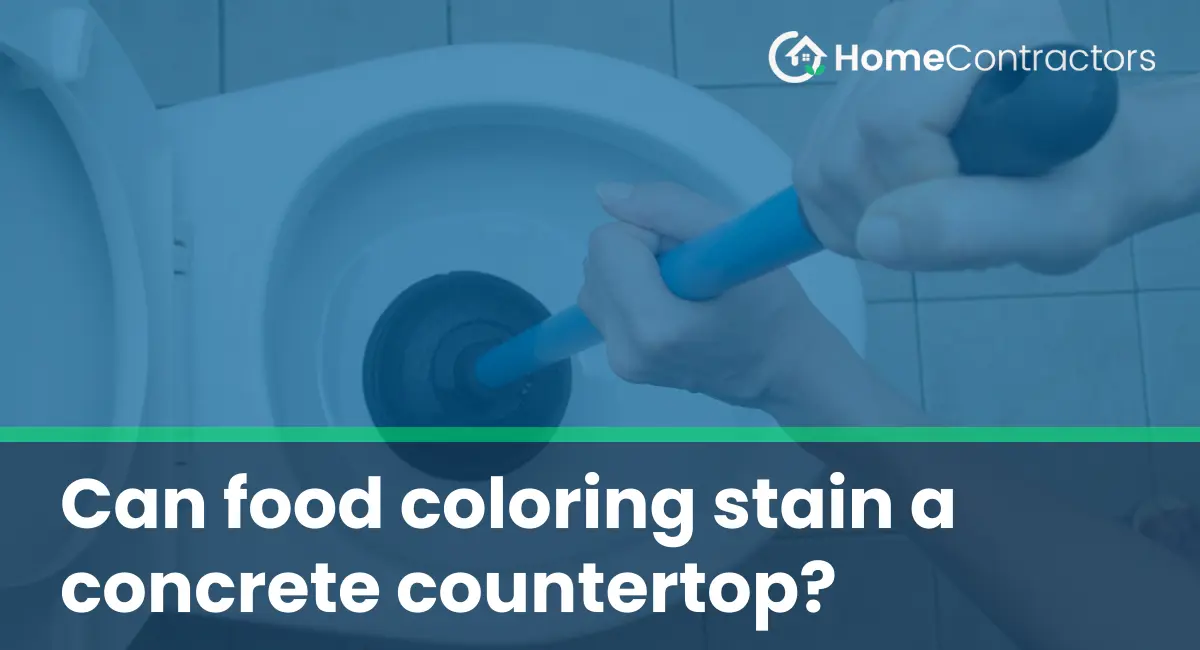Concrete countertops have become a popular choice for kitchen surfaces due to their durability and customizable designs. However, the concern over potential staining caused by food coloring is common among homeowners. In this article, we will delve into the question of whether food coloring can stain a concrete countertop and explore methods to prevent or remove any potential stains.
Understanding Food Coloring:
Food coloring is a concentrated liquid, gel, or powdered substance used to add vibrant colors to various food and beverages. It is commonly found in products like sweets, baked goods, and frosting. Food coloring is available in both synthetic and natural forms, with the former being more likely to cause stains due to their higher concentration of dyes.
Factors Affecting Staining:
To determine the likelihood of food coloring staining a concrete countertop, several factors need to be considered.
1. Porosity of Concrete:
Concrete is a porous material, meaning it has tiny interconnected voids that allow substances to penetrate its surface. The porosity of concrete can vary depending on the mix design and the final finish of the countertop. More porous concrete is generally more prone to staining.
2. Sealing:
Sealing concrete countertops is a common practice to enhance their stain resistance and overall durability. However, the effectiveness of the sealer will depend on its quality and whether it is properly maintained. A well-sealed countertop is less likely to stain.
3. Dye Concentration:
Food coloring dyes differ in concentration, with some being more potent than others. Higher concentrations increase the likelihood of staining since they penetrate more deeply into porous materials.
Prevention:
1. Prompt Cleaning:
To minimize the risk of staining, it is essential to clean up any spills or stains on the concrete countertop immediately. Food coloring, being highly pigmented, can quickly seep into porous surfaces if left unattended.
2. Protective Barriers:
Using cutting boards or trivets when working with food coloring can create a barrier between the countertop surface and any potential stains. Placing a protective layer between the coloring and the concrete minimizes direct contact.
3. Regular Sealing:
Ensuring that your concrete countertop is adequately sealed is crucial for stain prevention. Regularly inspect the countertop for signs of wear or damage to the sealant, and reapply as necessary.
4. Avoid Synthetic Food Coloring:
Choosing natural food coloring alternatives, such as those derived from fruits and vegetables, can reduce the intensity of potential stains. Natural dyes are typically less concentrated than their synthetic counterparts.
Removing Food Coloring Stains:
1. Quick Response:
Acting promptly when a stain occurs is crucial for effective removal. The longer the food coloring remains on the surface, the deeper it can penetrate, making removal more challenging.
2. Gentle Cleaning:
Start by blotting the stained area with a clean cloth or paper towel to absorb as much of the food coloring as possible. Avoid scrubbing aggressively, as excessive force could spread the stain further. Instead, gently blot or dab the stain.
3. Stain Remover Options:
Several stain-removing options can help eliminate food coloring stains from concrete countertops. A mixture of baking soda and water, hydrogen peroxide, or liquid dish soap and warm water can be applied to the stained area. Gently rub the stained surface using a sponge or soft cloth, and rinse thoroughly.
While food coloring does have the potential to stain a concrete countertop, taking precautionary measures can greatly reduce this risk. Prompt cleaning, using protective barriers, regular sealing, and opting for natural food coloring alternatives are effective preventive methods. In case a stain does occur, a quick response and careful use of stain removal techniques can usually eliminate the discoloration. By following these recommendations, you can enjoy a vibrantly decorated kitchen without worrying about food coloring stains on your concrete countertop.
